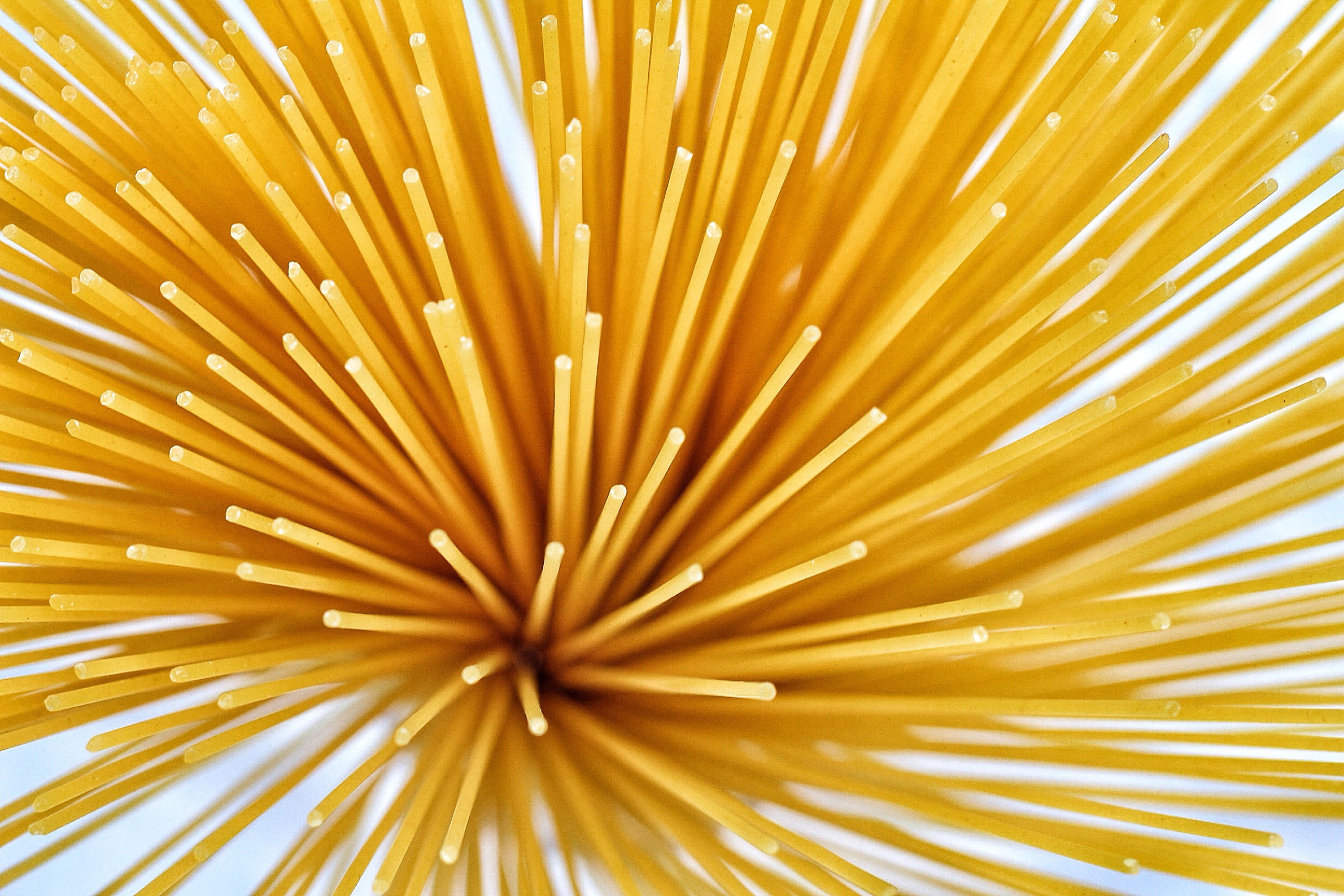
It’s nearly impossible to break a dry stick of spaghetti precisely in two. This challenge has flummoxed even the likes of famed physicist Richard Feynman ’39, who once spent a good portion of an evening breaking pasta with Danny Hillis ’78 as they looked for a theoretical explanation for why the sticks insistently shattered into three pieces or more.
Feynman’s kitchen experiment remained unresolved until 2005, when physicists from France pieced together a theory to describe the forces at work when spaghetti—and any long, thin rod—is bent. They found that when a stick is bent evenly from both ends, it will break near the center, where it is most curved. This initial break triggers a “snap-back” effect and a bending wave, or vibration, that fractures the stick again. Their theory seemed to solve Feynman’s puzzle. But a question remained: could spaghetti ever be coerced to break in two?
The answer, according to a new MIT study coauthored by Jörn Dunkel, associate professor of physical applied mathematics, is yes—with a twist. The researchers report that it’s possible to break spaghetti in two by both bending and twisting the dry noodles.
The team, led by Ronald Heisser ’16, now a graduate student at Cornell University, and Vishal Patil, a mathematics graduate student in Dunkel’s group, built a mechanical fracture device to controllably twist and bend hundreds of sticks of spaghetti, recording the fragmentation process on camera at up to a million frames per second. They found that by first twisting the spaghetti at almost 360 degrees and then slowly bending it, they could make the stick snap into two pieces rather than more. The findings were consistent for both Barilla No. 5 and Barilla No. 7, two spaghetti types with slightly different diameters.
Patil also developed a mathematical model to explain the two effects involved in creating a clean break. In the snap-back, the stick springs back in the opposite direction from which it was bent and wobbles back and forth, creating a bending wave. Then in the twist-back, the twisted stick unwinds to its original straightened configuration, generating a “twist wave” that makes the stick corkscrew back and forth until it comes to rest. The team concluded that the twist wave travels faster than the bending wave, dissipating energy to prevent the accumulations of critical stress that might cause subsequent fractures.
“This has been a fun interdisciplinary project started and carried out by two brilliant and persistent students—who probably don’t want to see, break, or eat spaghetti for a while,” says Dunkel.
Keep Reading
Most Popular
Large language models can do jaw-dropping things. But nobody knows exactly why.
And that's a problem. Figuring it out is one of the biggest scientific puzzles of our time and a crucial step towards controlling more powerful future models.
How scientists traced a mysterious covid case back to six toilets
When wastewater surveillance turns into a hunt for a single infected individual, the ethics get tricky.
The problem with plug-in hybrids? Their drivers.
Plug-in hybrids are often sold as a transition to EVs, but new data from Europe shows we’re still underestimating the emissions they produce.
Stay connected
Get the latest updates from
MIT Technology Review
Discover special offers, top stories, upcoming events, and more.